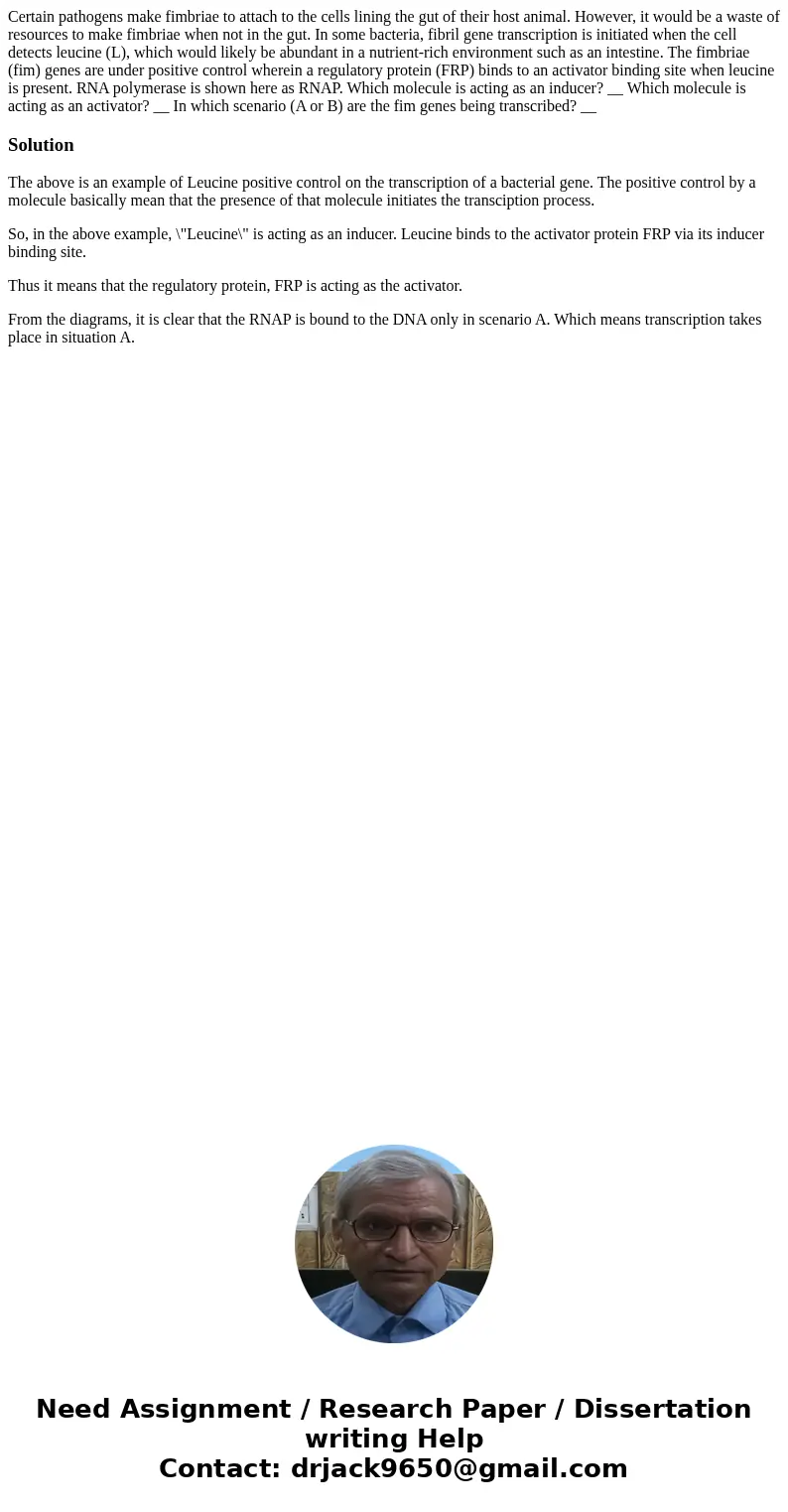Certain pathogens make fimbriae to attach to the cells linin
Certain pathogens make fimbriae to attach to the cells lining the gut of their host animal. However, it would be a waste of resources to make fimbriae when not in the gut. In some bacteria, fibril gene transcription is initiated when the cell detects leucine (L), which would likely be abundant in a nutrient-rich environment such as an intestine. The fimbriae (fim) genes are under positive control wherein a regulatory protein (FRP) binds to an activator binding site when leucine is present. RNA polymerase is shown here as RNAP. Which molecule is acting as an inducer? __ Which molecule is acting as an activator? __ In which scenario (A or B) are the fim genes being transcribed? __ 
Solution
The above is an example of Leucine positive control on the transcription of a bacterial gene. The positive control by a molecule basically mean that the presence of that molecule initiates the transciption process.
So, in the above example, \"Leucine\" is acting as an inducer. Leucine binds to the activator protein FRP via its inducer binding site.
Thus it means that the regulatory protein, FRP is acting as the activator.
From the diagrams, it is clear that the RNAP is bound to the DNA only in scenario A. Which means transcription takes place in situation A.

 Homework Sourse
Homework Sourse